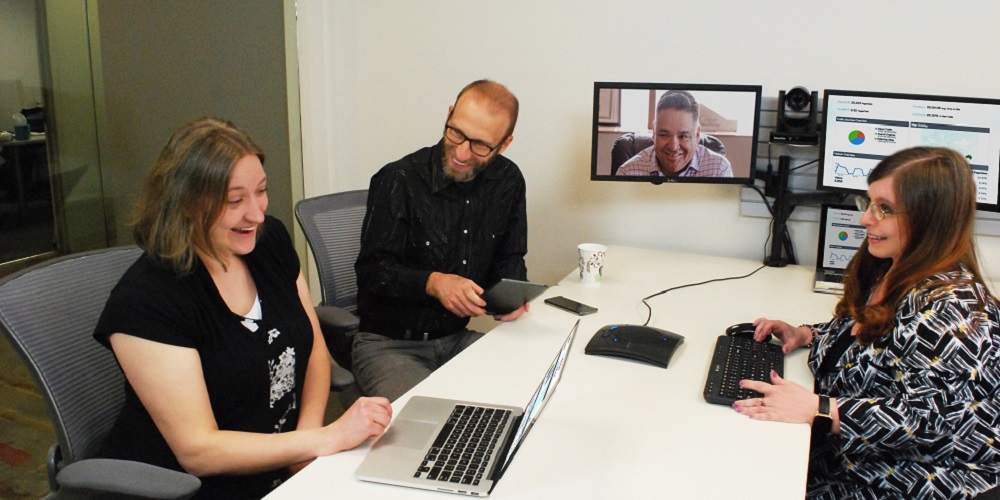As global COVID-19 cases and deaths continue to fall, many companies are requiring employees to work in the office at least part of each week rather than working from home every day. This year, companies such as Citigroup, Google, Twitter, and Apple have all implemented plans that require employees to work in the office a minimum number of days each week. Some writers have used the term “The Great Return” to describe this phenomenon.
However, after more than two years of remote work pushed workers to adopt new communication methods and collaboration tools, companies pursuing a pre-COVID in-office work model can face significant challenges balancing workers’ needs and expectations with those of management. In addition, there can be return-to-office work issues that neither employees nor management realize until they are faced with them.
One of the main concerns is the risk of delays or loss of efficiency in daily operations due to technological shortcomings or difficulty managing disparate communications systems. For example, in the pre-COVID office environment it was common to have a dedicated in-room video codec that supported H.323 and SIP protocols for video calls and a POTS conference bridge for audio calls. When remote work became recommended or even necessary due to high COVID-19 transmission rates, there was a massive increase in the use of software applications like Microsoft Teams, Zoom and others along with webcams for group calls.
Consequently, workers returning to the office may be more comfortable and efficient at hosting meetings when they can use familiar software applications found on their personal devices. After all, their contacts and preferences are already set up in their conferencing applications that they’ve had years of practice operating, while they have probably forgotten how to use the dedicated in-room video codec in the office conference room. Additionally, workers returning to the office may encounter several issues:
- An employee accustomed to using their personal webcam and laptop speakers for virtual conferencing may not realize that in a large room, some participants may be too far away to hear far end audio or to have their speech be picked up adequately by the laptop microphone. The host may also not realize their laptop webcam cannot adequately capture video of all the local participants in the meeting room. These issues can significantly impact a team’s productivity during meetings, and it would be easy for management to overlook this crucial aspect of the transition back to in-office work.
- If a company’s management or IT staff recognizes any of the problems described above, they must then determine the ideal means for employees to connect their laptops or mobile devices to existing audio and video peripherals in order to eliminate technological challenges and ensure efficient and productive meetings.
- Employees and managers may want to physically distance themselves from other employees while attending meetings (even if this is no longer the recommended guidance from the CDC) and avoid touching shared surfaces. In this situation, some office managers or meeting hosts may choose to reconfigure table and chair layouts in meeting rooms, while some employees may request alternatives to touchpanel dialers and tabletop microphones.
An ideal room setup in today’s world includes plug-and-play solutions that allow employees to use their own laptops or mobile devices to run meetings and presentations wirelessly or through a simple USB cable. To address worker concerns about increased physical distancing and limit the need for shared control surfaces, meeting room systems can incorporate ceiling-mounted microphones and control apps that run on users’ personal mobile devices. Also, meetings set up by conferencing applications like Microsoft Teams and Zoom do not always include POTS dial-in conference bridge and passcode numbers by default. A user’s account may need to be set up specifically to include this capability.
Not all business leaders clearly understand the vital nature of this technological reality, so it’s critical for AV and IT integrators to have thoughtful discussions with executives and internal IT teams to consider the full scope of needs. A business whose workers collaborate on video from various locations but also has teams meet in person must account for technologies on both sides of the equation to ensure smooth communications.
Luckily, technology manufacturers saw these practices changing and subsequently designed and launched new cameras, microphones and communications tools to suit every type of work arrangement and environment. The focus should be on delivering technology for both the office and the home that can communicate perfectly and provide simple use and connection with third-party devices, systems and online platforms to make the transitions between home and office as seamless as possible.
The last thing workers want is to have one set of software and technology tools for communication at home, another for their personal workspace at the office, and yet another for conference rooms. It’s also possible that a company’s different meeting rooms in the same building or across multiple locations may require unique setup or operations, which can interrupt schedules or require frequent assistance from IT staff.
Buyers and integrators can benefit from finding manufacturers that offer a wide range of interoperable home- and office-based solutions that provide premium performance. There’s also something to be said for home/office consistency, and there are technology options at virtually every price point that are excellent for both scenarios to improve and simplify both internal and external communications.
Affordable tabletop or PC-mounted cameras and microphones for home offices or individual in-office workspaces can significantly raise the quality of one-on-one virtual meetings without introducing added complexity, and if they are from the same manufacturer as the more robust conference room systems, user expectations and operations can be smooth and consistent.
The bottom line is that work is being done in more places than ever before, and it’s likely that both hybrid and full-time in-office schedules will continue to be utilized for the foreseeable future. Companies that plan ahead and invest in technologies and systems that support the needs of their changing workforce will be better positioned to weather future changes and adapt to external forces without falling behind in technological capabilities or productivity.
As trusted experts, systems integrators have an immediate opportunity to impress new clients and revisit existing clients to discuss how their needs have changed over the past two years. Those who come prepared with knowledge about the latest products and systems can help deliver efficient solutions that simplify work and allow companies to support their employees’ hybrid work needs.











